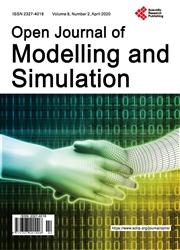A Short Review on Computational Hydraulics in the context of Water Resources Engineering
引用次数: 16
Abstract
The term hydraulics concerned with the conveyance of water that can consist of very simple processes to complex physical processes, such as flow in open rivers, flow in pipes, flow of nutrients/sediments, flow of ground water to sea waves. The study of hydraulics is primarily a mixture of theory and experiments. Computational hydraulics is very helpful in-order to quantify and predict flow nature and behavior. Mathematical model is backbone of the computational hydraulics that consist simple to complex mathematical equations with linear and/or non-linear terms and ordinary or partial differential equations. Analytical solution of this mathematical equations is not feasible in the majority of cases. In this consequences, mathematical models are solved using different numerical techniques and associated schemes. In this manuscript we will review hydraulic principles along with their mathematical equations. Then we will learn some commonly used numerical technique to solve different types of differential equations related to the hydraulics. Among them the Finite Difference Method (FDM), Finite Element Method (FEM) and Finite Volume Method (FVM) will be discussed along with their use in real-life applications in the context of water resources engineering.水利工程背景下的计算水力学简评
水力学一词涉及水的输送,可以由非常简单的过程到复杂的物理过程组成,如开放河流中的流动、管道中的流动,营养物质/沉积物的流动,地下水到海浪的流动。水力学的研究主要是理论和实验的结合。计算水力学对于量化和预测流动性质和行为非常有用。数学模型是计算水力学的支柱,它包括具有线性和/或非线性项的简单到复杂的数学方程以及常微分方程或偏微分方程。这种数学方程的解析解在大多数情况下是不可行的。因此,使用不同的数值技术和相关方案来求解数学模型。在这份手稿中,我们将回顾水力学原理及其数学方程。然后我们将学习一些常用的数值技术来求解与水力学相关的不同类型的微分方程。其中,将讨论有限差分法(FDM)、有限元法(FEM)和有限体积法(FVM)及其在水利工程实际应用中的应用。
本文章由计算机程序翻译,如有差异,请以英文原文为准。
求助全文
约1分钟内获得全文
求助全文

 求助内容:
求助内容: 应助结果提醒方式:
应助结果提醒方式:


